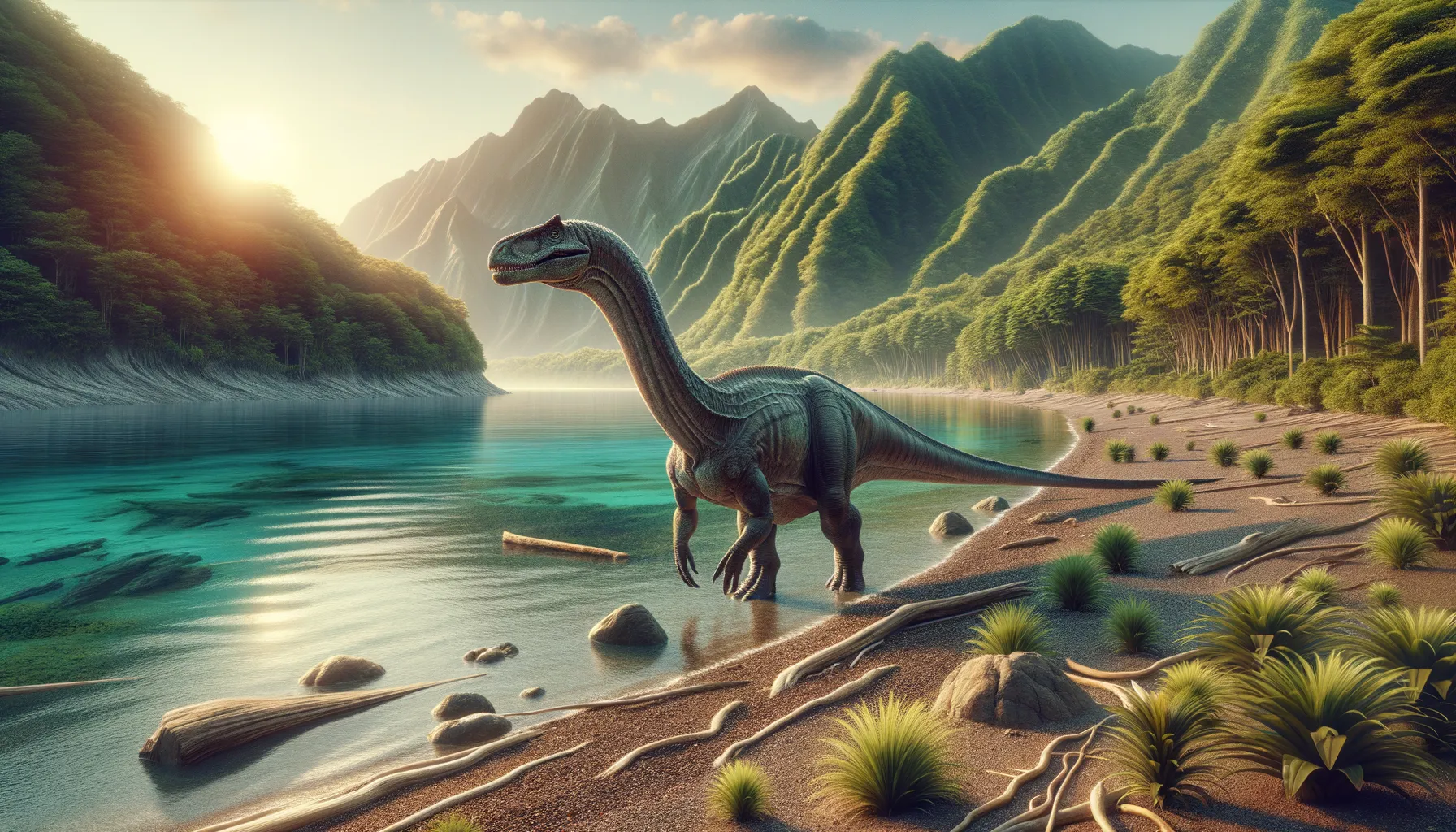
Fukuititan
Discover the gentle giant of ancient Japan.
Period
Cretaceous
Length
Measured approximately 10 meters long.
Height
Could reach several meters tall.
Weight
Estimated to weigh several tons.
Fukuititan is a genus of titanosaurian sauropod dinosaur discovered in the Fukui region of Japan. This large, plant-eating dinosaur roamed during the Cretaceous period, characterized by its long neck and tail. The discovery of Fukuititan in Asia added valuable insights into the diversity and distribution of sauropods in this area. Its fossil remains provide significant information about the prehistoric ecosystems it inhabited.
Diet
Fukuititan was herbivorous, feeding mainly on leaves and other vegetation. Its long neck allowed it to reach high into trees, accessing foliage not available to other herbivores.
Hunting
As a herbivore, Fukuititan did not engage in hunting. It likely spent much of its time foraging for plant material, using its size to deter predators.
Environmental challenges
Fukuititan faced challenges such as changing climates and evolving plant life. It had to adapt to different vegetation types as they emerged or disappeared over time. Competition with other large herbivores for food resources was another challenge. Predators would have also posed a threat, requiring constant vigilance and possibly herd strategies for protection.
Speed
Fukuititan likely moved at a slow pace.
Lifespan
Estimated to live several decades.
First discovery
Discovered in Japan's Fukui region in 2010.
Fun Facts
- Fukuititan was a dinosaur that lived during the early Cretaceous period, around 120 million years ago.
- This dinosaur was discovered in Japan, specifically in the Fukui Prefecture, which is how it got its name.
- Fukuititan belonged to the group of sauropod dinosaurs, known for their long necks and tails.
- It was a herbivore, meaning Fukuititan primarily fed on plants and foliage available in its environment.
- Surprisingly, despite being found in Japan, Fukuititan shares some characteristics with sauropods from other parts of the world, hinting at interesting migratory patterns.
- Fukuititan is not as large as some of its gigantic sauropod cousins, but it still boasted an impressive size.
- The discovery of Fukuititan helps scientists learn more about the diversity and spread of dinosaurs in Asia during the Cretaceous period.
Growth and Development
Like other sauropods, Fukuititan likely grew rapidly during its early years to minimize vulnerability to predators. It may have hatched from eggs and quickly reached a size that offered some level of defense. The bones indicate a long growth period, suggesting these dinosaurs took many years to reach full size.
Habitat
Fukuititan lived in a semi-tropical environment with a mix of forests and open spaces. The area was likely rich in rivers and lush vegetation, supporting a variety of herbivorous dinosaurs. This habitat provided ample food resources and shelter from predators.
Interaction with other species
Fukuititan may have shared its environment with other dinosaurs, like smaller herbivores and carnivores. Its size offered protection from most predators, and it likely used its stature to coexist peacefully with other species. Interaction might have included competition for food or mutualistic relationships, such as seed dispersal.
Natural lifespan
Fukuititan had a natural lifespan that could reach several decades.
Reproduction
Fukuititan likely reproduced by laying eggs in nests. Parental care, if any, remains unclear, but the young may have formed groups for better survival chances. Reproduction would have been critical for maintaining population numbers in changing environments.
Social behaviour
Fukuititan might have lived in herds, benefiting from collective vigilance against predators. The herd structure could have provided social interaction, aiding in the raising of young. These social dynamics likely played a role in their survival.
Fossil locations
The primary fossils of Fukuititan were found in the Fukui Prefecture of Japan. These discoveries have helped paint a picture of the dinosaur's life and environment. The fossil site is essential for paleontologists studying the distribution of Asian sauropods during the Cretaceous period.
